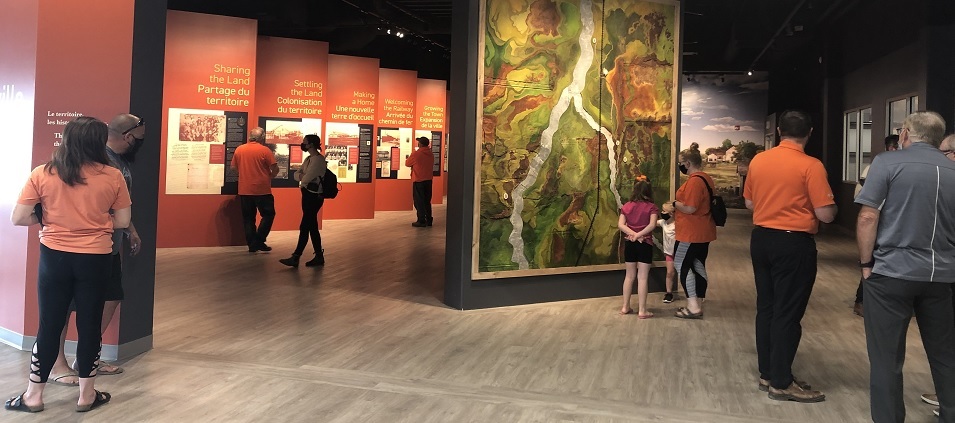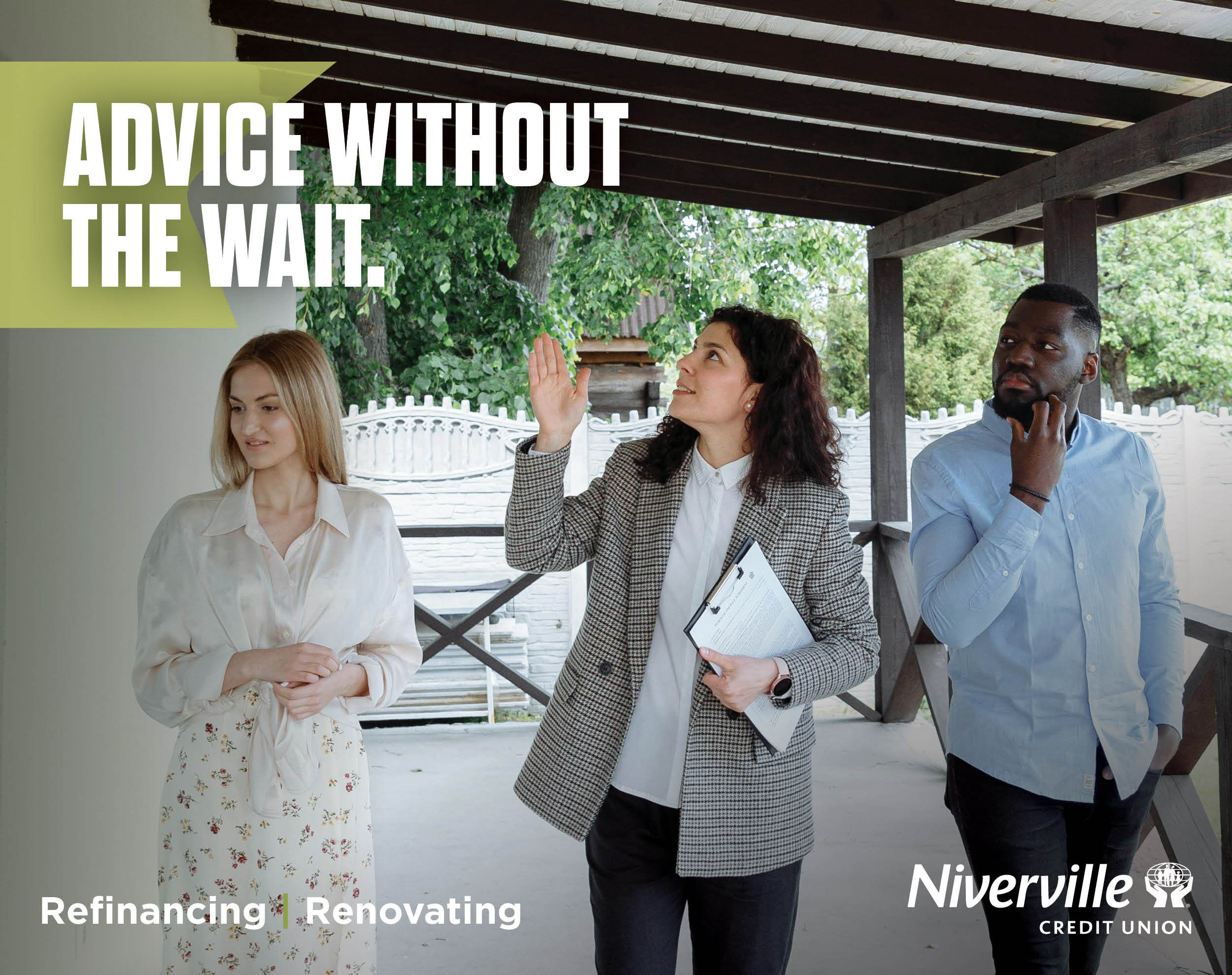
The museum feature inside Niverville’s Community Resource and Recreation Centre (CRRC) was officially unveiled to the public on Thursday, September 30.
The ceremony, which coincided with Canada’s first National Day for Truth and Reconciliation and struck a sombre tone, was organized by the Town of Niverville and featured addresses by two local men, Roger Armbruster as well as Peter Yellowquill, who offered a prayer of blessing from an Indigenous perspective.
Armbruster, director of Canada Awakening Ministries, served on the committee of local historians responsible for the museum. The committee worked on the exhibit under the guidance of Dr. Joseph Wiebe, professor of Religious Studies, Religion and Ecology, and Ethics at the University of Alberta.
On behalf of the committee, Armbruster commented that it was very interesting to open the museum on the National Day for Truth and Reconciliation.
“Working with the people who know the history of this area, like Ernie Braun, Steve Neufeld, and the rest of the committee, we really realized that we need to acknowledge the fact that we are on a territory here, that there were people here before we ever just came as settlers,” Armbruster said. “That’s very important. And we commit to understanding our heritage… and we want to move from hurting to healing.”
Armbruster then welcomed Peter Yellowquill to speak and say a blessing for the museum.
Yellowquill, from Long Plain First Nation, is a survivor of the residential school system and is a fifth-generation descendent of Chief Yellowquill, a signatory to Treaty No. 1.
“When your people came amongst us, and the settlers and the men who represented Her Majesty and the crown of Great Britain, they wanted land and they wanted to do an exchange for it,” said Yellowquill. “They wanted to make a treaty with us… As long as your plough is in the earth, that treaty is alive. You are part of that treaty. As long as the sun shines, as long as the grass grows, as long as the rivers flow. What that means is from as long as we come from our mother’s womb from the waters of life, the water flows and the treaty is alive. And that is our relationship,” said Yellowquill. “And that is what we want to teach. Education and how the fundamental aspect of our new renewed way of life has changed forever.”
Yellowquill described how the First Nations leaders chose to make the treaty because the arrival of white settlers had already changed the land so significantly, but they could not have foreseen how their people would be treated.
“We knew it was never going to be the same,” he said. “The buffalo were gone, the land was being changed, and it was getting harder and harder to live off the land. But never in all of those discussions was there any talk about residential schools.”
Earlier in the week, Yellowquill also delivered a presentation to Grade 10 students at Niverville High School about the history of First Nations people, what was taken from them, and what their future needs are.
After his remarks, Yellowquill invited everyone in attendance into a prayer of blessing for the CRRC, mentioning a specific thankfulness for the Mennonite people who settled in the Niverville area. He mentioned the tradition of the Mennonite people to be compassionate, to feed the world, and to send their young people into the world to do good.
“I’m standing here an innocent victim,” he said as part of his blessing. “Everyone standing before me is innocent of the crime. And it is in this relationship where we can reconcile.”
Town Pleased with Museum Construction
The museum had not been in the original concept of the building during its initial phases, but it was added as a condition for one of the grants awarded for the construction of the CRRC.
“To my thinking, when they said we needed to have a cultural centre in here, I was a little bit disappointed at first,” said Deputy Mayor John Funk. “I thought, what do you want a museum in a sports centre for? But this isn’t a stuffy museum that’s only open two hours a day. This one will be open to the public at all times the building is open. I’m happy to see that.”
Indigenous Blessing Had Been Postponed
Funk thanked Yellowquill for his involvement and for sharing at the local school. And although he said that the town itself had no official statement on Truth and Reconciliation, he did explain that it was originally suggested to have an Indigenous blessing at the CRRC grand opening back in July.
“Roger had been talking to us a few months ago about the grand opening, but we had strict orders from the province not to have any extra people there, so this was the next time that it had worked for him to come,” said Funk.
Councillor Chris Wiebe added, “We had originally wanted to do it at the opening of the building, which would have been nice, too, but this turned out to be almost more suiting to the times.”
Museum Features
The museum is located on the second floor of the CRRC, on the landing of the mezzanine that opens onto the walking track above the gymnasium. A bold orange accent wall denotes the entrance of the space, blazoned with the words “Niverville Cultural Space: The land, the stories, the people.”
A floor-to-ceiling map of the region immediately attracts the attention of visitors. It is the artistic contribution of Candace Lipischak, a multidisciplinary Franco-Metis artist from Otterburne who used locally recycled materials. The highly textural map illustrates the movement of both First Nations and settlers in the area.
One side of the self-guided exhibit area allows visitors to explore historical benchmarks reached as the Town of Niverville formed and grew, each presented with written descriptions and on a section of accordion-fold panelled walls. From “Sharing the Land” to “Making a Home” and “Growing the Town,” the story of the people who lived and continue to live where the Red and Rat rivers meet is thoroughly told.
A large wall-to-wall mural grounds the rear of the exhibit, depicting an artist’s vision of what the original Niverville townsite looked like around the time when the railroad came to the area.
A collection of quotes showcase a wide variety of local reflections. One quote from Gladys Christie contributes a memory she had about summer picnics on the John Church farm. A quote from Louis Riel, the first Member of Parliament for Provencher, is displayed on another.
The museum experience is engaging and colourful, while also achieving an appropriately sombre and respectful tone. The spacious exhibit, although not overly large, leaves room for additional content to be added in the future.
The tour culminates with the words taken from the Niverville cemetery memorial marker: “Dedicated to all who with hardship and toil began to settle here in the late 19th century… May their memory inspire future generations.”



















